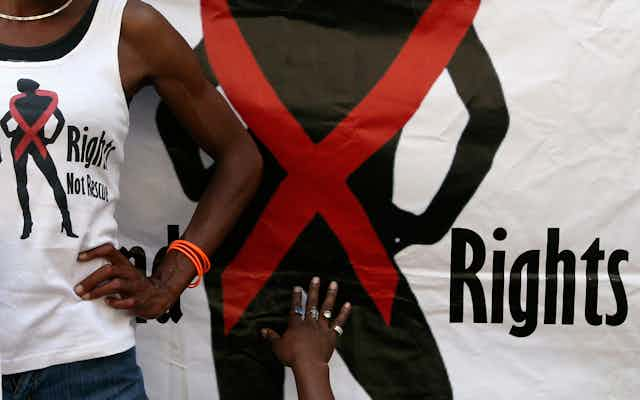More than half the female sex workers in South Africa’s three largest cities are HIV positive – but less than one-third are on antiretroviral treatment, according to a newly released study.
Over 90% of these women have voluntarily gone for HIV tests, received counselling and regularly use condoms with their clients. Yet they have not been able to access HIV treatment in equal numbers.
There are several possible reasons for this:
-
Some may not have been eligible for antiretrovirals under previous treatment guidelines;
The need to work around the clock to survive means they may not have time to access clinics;
Or the stigma they experience at clinics may deter them from seeking regular care.
These are some of the results of the South Africa Health Monitoring Survey done with female sex workers. It is the first HIV surveillance study of its kind in South Africa in over a decade. It fills one of the gaps in the statistics around the South African HIV epidemic – current and reliable data on female sex workers.
The results of the study have informed South Africa’s National Sex Work Sector Plan, which aims to control the HIV epidemic among sex workers. It will use a combined strategy of peer education and improved access to clinical services, including antiretroviral treatment and Truvada for pre-exposure prophylaxis.
Informing an HIV response
The study, led by the University of California in partnership with the Anova Health Institute and the Wits Reproductive Health and HIV Institute, involved interviews with over 2,100 women. Each was asked to provide a blood sample for HIV and syphilis testing, and to answer a 45-minute questionnaire which included questions on:
health and risk behaviours;
experiences of gender-based violence perpetrated by partners, clients, and the police; and
access to medical care and HIV health programming.
What the statistics show is that currently very few female sex workers are benefiting from antiretroviral programmes. And it will be impossible to control the epidemic without dramatically increasing uptake among them.
The data also shows that putting HIV-negative female sex workers onto pre-exposure prophylaxis to prevent new infections would also be a benefit.
Pre-exposure prophylaxis has been proven to be very effective for people at risk of HIV. In 2015 South Africa and Kenya joined the US in approving the pre-exposure prophylaxis Truvada. Studies have shown that it provides users with up to 90% protection provided it is taken consistently. In earlier studies it was shown to be less successful in women who did not take the drug daily.
Study findings
The study found that in the country’s largest city, Johannesburg, up to 72% of female sex workers are living with HIV. In Durban, this dropped to 54% and in Cape Town 40% of sex workers are HIV positive.
We should not mince words here: this is horrible.
But if there is any good news here, it is that over 90% of these women have been tested for HIV, and that nearly three-quarters of HIV-positive sex workers are aware of their status. It shows that sex workers try to advocate for their own health.
Sex workers are one of several highly vulnerable key populations that are often neglected in the fight against HIV due to social stigma and frequent criminalisation. In South Africa, as in most countries in the world, sex work remains criminalised.
The high prevalence shows that HIV epidemic among South African female sex workers is as bad or worse than its neighbours. Around 70% of Swazi female sex workers and 25% of female sex workers in Mozambique are living with HIV.
Improving the uptake
South Africa faces a steep challenge in getting 90% of HIV-infected female sex workers on antiretroviral treatment by 2020. This is despite the fact that female sex workers have access to many different sources of health care, including antenatal care, Department of Health clinics, and in some cases clinics that specialise in providing healthcare to sex workers.
South Africa is now following the World Health Organisation’s recommendations for early treatment, which translates into anyone with a CD4 count of less than 500 being eligible for treatment. This means that instead of treating people when they are very sick, treatment may now begin while they are healthy in order to keep them healthy.
This also means that the vast majority of HIV-positive sex workers are now eligible for antiretrovirals.
But stigma and other structural barriers to regular clinical access will be much more difficult to tackle.
For too long, condoms have been the only prevention strategy. The high prevalence we are seeing now among female sex workers is one of the consequences of relying only on condoms.
Although condom use is important, it cannot be the only measure to end the spread of HIV. Although the vast majority (over 75%) of female sex workers reported using condoms with their last client, condom use with non-paying partners like husbands or boyfriends is much lower.
More options are now available. Failing to expand treatment or implement pre-exposure prophylaxis programmes means startling statistics such as those among female sex workers in South Africa will be seen for years to come.

